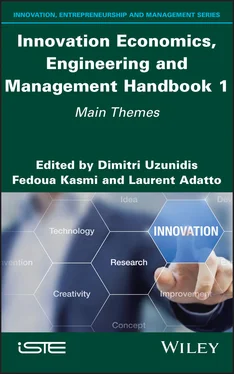247 260
248 261
249 262
250 263
251 264
252 265
253 266
254 267
255 268
256 269
257 270
258 271
259 272
260 273
261 274
262 275
263 276
264 277
265 278
266 279
267 280
268 281
269 282
270 283
271 284
272 285
273 286
274 287
275 288
276 289
277 290
278 291
279 292
280 293
281 294
282 295
283 296
284 297
285 298
286 299
287 300
288 301
289 302
290 303
291 304
292 305
293 307
294 308
295 309
296 310
297 311
298 312
299 313
300 314
301 315
302 316
303 317
304 318
305 319
306 320
307 321
308 322
309 323
310 324
311 325
312 327
313 328
314 329
315 330
316 331
317 332
318 333
319 335
320 336
321 337
322 338
323 339
324 340
325 341
326 342
327 343
328 344
329 345
330 346
331 347
332 348
333 349
334 350
335 351
336 352
337 353
338 354
339 355
340 356
341 357
342 358
343 359
344 360
345 361
346 363
347 364
348 365
349 366
350 367
351 368
352 369
353 371
354 372
355 373
356 374
357 375
358 376
359 377
360 378
361 379
362 380
363 381
364 382
365 383
366 384
367 385
368 386
369 387
370 388
371 389
372 390
373 391
374 392
375 393
376 394
377 395
378 397
379 398
380 399
381 400
382 401
383 402
384 403
385 404
386 405
387 406
388 407
389 408
390 409
391 410
392 411
393 412
394 413
395 414
396 415
397 416
398 417
399 418
400 419
401 420
402 421
403 422
404 423
405 424
406 425
407 426
408 427
409 428
410 429
411 430
412 431
413 432
414 433
415 434
416 435
417 436
418 437
419 438
420 439
Innovation Economics, Engineering and Management Handbook 1
Main Themes
Edited by
Dimitri Uzunidis
Fedoua Kasmi
Laurent Adatto

First published 2021 in Great Britain and the United States by ISTE Ltd and John Wiley & Sons, Inc.
Apart from any fair dealing for the purposes of research or private study, or criticism or review, as permitted under the Copyright, Designs and Patents Act 1988, this publication may only be reproduced, stored or transmitted, in any form or by any means, with the prior permission in writing of the publishers, or in the case of reprographic reproduction in accordance with the terms and licenses issued by the CLA. Enquiries concerning reproduction outside these terms should be sent to the publishers at the undermentioned address:
© ISTE Ltd 2020
ISTE Ltd
27-37 St George’s Road
London SW19 4EU
UK USA
www.iste.co.uk
John Wiley & Sons, Inc.
111 River Street
Hoboken, NJ 07030
www.wiley.com
© ISTE Ltd 2021
The rights of Dimitri Uzunidis, Fedoua Kasmi and Laurent Adatto to be identified as the authors of this work have been asserted by them in accordance with the Copyright, Designs and Patents Act 1988.
Library of Congress Control Number: 2021932077
British Library Cataloguing-in-Publication Data
A CIP record for this book is available from the British Library
ISBN 978-1-78630-456-8
Introduction
General Presentation
“ Innovation is everything in the economy that is either not being done, or not being done again.” - Dimitri Uzunidis
Agility, flexibility and rapid adaptation to change are becoming the key words for growth and development in our society. Finding new ways of doing things and creating something new out of what already exists remains essential when facing crises (economic, social and environmental). The ability to innovate is therefore the main condition for maintaining the competitiveness and performance of companies, regions and territories in a changing context. innovative activity has long been considered a driving force for “progress”, but its impact on the transformation of socio-economic systems is greater when a succession of profound changes are introduced on broader scales (organizational, social, environmental, political, behavioral, etc.). Achieving these transformations requires the mobilization of resources, information, knowledge and networks of specific actors in order to guide innovation efforts to respond to more global challenges such as reducing environmental impacts, building resilience, and improving health, safety and people’s well-being. Through what mechanisms and under what conditions does innovation enable more radical changes that progressively and sustainably reorient our modes of development? This is the overall question that this two-volume encyclopedic book answers, by mobilizing a set of interdisciplinary theories and concepts devoted to the study of innovation.
Innovation, in fact, consists of the design and marketing of new goods and technologies, the application of new working methods or the conquest of new markets. Today’s knowledge-based economy implies that innovation is the result of greater interaction between businesses, universities, public institutions, consumers and citizens. Innovation networks create new knowledge and contribute to the diffusion of new socio-economic and technological models, through new modes of production and distribution. Innovation results from technological, organizational and commercial changes.
How do organizations design and manage innovation processes? What strategies and management tools do they apply for the concrete implementation of innovation processes? What role do innovation policies play in driving these processes? How does innovation impact competitiveness and performance? This involves analyzing companies’ technological opportunities, organizational strategies and the integrated management of research and development, marketing and financial projects, etc.
This book is dedicated to the study of innovation. Theoretical reminders are associated with the discussion of concepts. Written in a didactic way, the reader will easily be able to situate the current debates around the need for technological and social innovation and the imperative of creating a climate conducive to the launch of large-scale innovation processes, because the current socio-economic stakes are as important as they are global. The book consists of two volumes. The first one is devoted to the presentation of the basic concepts. Its aim is to provide a broad and precise overview of the fundamental issues addressed by economists, historians and engineers specializing in innovation. The second volume contains a set of studies of current concepts and opens the debate on the evolution of the concept of innovation in the years to come.
The innovation process has a causal relationship with a problem – technological, economic, social – posed to the market economy and identified consciously or unconsciously by its actors (companies, entrepreneurs, consumers, etc.). Innovation is thus linked to the search for the optimal solution to the problem posed. This presupposes the use of knowledge and information from practice, experience and scientific activity. Innovation is itself a cumulative and historical process defined by six major characteristics highlighted in this book: (a) the impacts of innovation are difficult to predict; (b) the scale of diffusion of innovation is difficult to calculate; (c) innovative activities are asymmetric and staggered in time; (d) the time of learning, execution and diffusion plays a crucial role in the act of innovating; (e) the business environment conditions the time, scale, nature and impacts of innovation; and (f) innovations are interdependent.
Читать дальше













